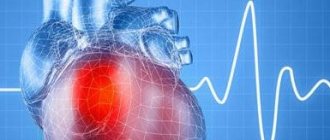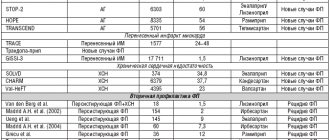Electric shock occurs when you come into contact with an electrical circuit that contains voltage sources and/or current sources that can cause current to flow through the energized part of the body. Typically, a person is sensitive to passing a current of more than 1 mA. In addition, in high-voltage installations, an electric shock is possible without touching live elements, as a result of current leakage or breakdown of the air gap. The strength of the injury depends on the power of the discharge, on the time of exposure, on the nature of the current (direct or alternating), on the condition of the person - the moisture of the hands, etc., as well as on the place of contact and the path of current passage through the body.
Due to the high electrical resistance of human tissues, they heat up quite quickly, which can cause burns. Even relatively small stresses, with short-term contact with the chest, can cause a malfunction of the heart muscle. An electric shock can cause problems in the nervous system, such as erratic muscle contractions. Repeated impacts can cause neuropathy. If the head is hit by an electric current, loss of consciousness may occur.
At sufficiently high voltages and currents, so-called electric arcs can occur, causing severe thermal burns. The electric arc also produces strong light emissions.
Saving the life of a person struck by an electric current largely depends on the speed and correctness of the actions of those assisting him. First aid should be provided immediately, if possible at the scene of the incident, while simultaneously calling medical help.
The person providing assistance should know:
- main signs of violation of the vital functions of the human body;
- general principles of first aid and its techniques in relation to the nature of the injury received by the victim;
- the main methods of carrying and evacuating victims.
The person providing assistance must be able to:
- assess the condition of the victim and determine what kind of help he needs in the first place;
- ensure free patency of the upper respiratory tract;
- perform artificial respiration “mouth to mouth” (“mouth to nose”) and closed cardiac massage and evaluate their effectiveness;
- determine the advisability of calling the victim by ambulance or passing transport.
First aid sequence:
1. Eliminate the impact on the body of damaging factors that threaten the health and life of the victim (free from electric current, remove from a contaminated atmosphere, extinguish burning clothing, etc.), assess the condition of the victim; 2. Determine the nature and severity of the injury, the greatest threat to the life of the victim and the sequence of measures to save him; 3. Carry out the necessary measures to save the victim in order of urgency (restore airway patency, perform artificial respiration, external cardiac massage); 4. Support the victim’s basic vital functions until a medical professional arrives; 5. Call an ambulance or take measures to transport the victim to the nearest medical facility.
In case of electric shock, death is often clinical (“imaginary”), so you should never refuse to provide assistance to the victim and consider him dead due to lack of breathing, heartbeat, or pulse.
Only a doctor has the right to decide on the feasibility or safety of measures to revive the victim and make a conclusion about his death.
Electrical injury: first aid
Electrical injury to a person occurs as a result of direct contact with a current source. This kind of damage can mean a minor electric shock, which can be obtained, for example, as a result of contact with a radio socket, or a serious injury, which is possible when struck, for example, by lightning. First aid for an electrical injury is necessary for the victim in any case, and it is important to take into account that with such a lesion there is an impact on the central nervous system, due to which the prognosis regarding the general condition of the victim and the complications relevant to him is subsequently determined.
Three types of electrical injuries
- Local, with the appearance of local burns and damage;
- General, with damage to vital human organs (this type of damage is called electric shock);
- Mixed.
Local electrical injuries are characterized by the following lesions: metallization of the skin, the appearance of current signs, mechanical damage and electroophthalmia (damage to the outer membranes of the eyes as a result of exposure to ultraviolet radiation or electric arc welding). General electrical injuries are the result of an electrical shock that excites living tissue to the point of convulsions.
Electrical injuries: severity of injuries
The severity level determined for the lesion in each specific case depends on factors such as:
- current strength - in this case, the higher the level of the impact indicator, the correspondingly more serious the damage received by the victim;
- duration of exposure - based on the factor of impact on the victim’s body, the severity and seriousness of its consequences is determined;
- degree of resistance - this factor is mainly determined by the characteristics of the skin type and its general condition at the time of electric shock. Thus, dry and thick skin is characterized by greater resistance to such exposure, as well as lower susceptibility to the effects of current. If we are talking about wet and thin skin, then its resistance to the current acting on it is much lower.
The effect of electric current on the human body
The mechanism of the negative impact of electric current on the human body is complex and diverse. As the current passes through the body, it has the following types of effects:
- Thermal effects, manifested by heating of the skin and tissue of internal organs, up to burns, leading to damage to blood vessels, nerve fibers and the brain and necrosis of tissue in parts of the body. When exposed to thermal effects, sharp functional disorders of human life support systems are observed, for example, sudden bleeding;
- Electrolytic effects, causing electrolysis of lymphatic fluid and decomposition of blood, disrupting the physico-chemical composition of all body tissues;
- Biological impact, expressed in disruption of the normal course of bioelectric processes inherent in living matter. The action of biocurrents that control the internal movements of the tissues of the human body is disrupted, which leads to involuntary unnatural convulsive contractions of the heart muscles and lungs. Living cells and tissues, with which the vitality of the organism is associated, become dangerously excited by the influence of current and may die;
- The mechanical action of an electric current, which causes separation and rupture of tissue due to the explosive formation of steam from blood and lymphatic fluid. The mechanical action provokes strong muscle contractions, up to the rupture of muscle fibers;
- Light effect, characterized by electroophthalmia after exposure to a powerful stream of ultraviolet radiation from an electric arc flash. External signs of electric shock include inflammation of the outer membrane of the eye.
In Fig. Below is an eye with signs of electroophthalmia.
Manifestations of electroophthalmia
Electrical injuries: types and symptoms
Medical practice determines a specific classification, each of the points of which is based on the degree of damage when exposed to electric current:
- I degree. As a result of electric shock, the victim experiences clonic muscle spasms, while he remains conscious. The degree of damage in question is characterized by the appearance of fear, pre-fainting/fainting, severe fatigue and weakness in the victim. As a rule, all manifestations of this degree of damage pass quickly, first aid for electrical injury is practically not required, and there is, accordingly, no need for treatment and subsequent hospitalization.
- II degree. Electrical trauma of this type leads to loss of consciousness of the victim, again clonic muscle spasms are noted, respiratory and cardiac activity is not affected, their functionality is within normal limits.
- III degree. The victim may experience loss of consciousness; in addition, convulsions may occur. Respiratory and cardiac activity are subject to certain disturbances.
- IV degree. Features of electric shock to this extent lead to clinical death. As a rule, it is advisable to talk about the relevance of this type of electrical injury when the applied current is 100 mA or more.
State institution of the Republic of Kalmykia
Electrical trauma causes morpho-functional changes in the central nervous, cardiovascular and respiratory systems. The severity and outcome of damage when exposed to electric current depend not only on the physical parameters of the current, but also on the resistance of the skin, its condition at the time of contact, time of exposure, etc.
Passing through the human body, electric current has 4 types of effects on the human body: • Thermal effect. It manifests itself in burns of individual parts of the body, heating of blood vessels, blood, nerves, heart, and brain to high temperatures, which causes serious damage to organs; • Electrolytic action. There is decomposition of organic fluid (lymph and blood), a violation of the physico-chemical composition and properties of body fluids; • Mechanical action. Dynamic stratification occurs, rupture of body tissue (heart muscles, blood vessels) as a result of an electrical dynamic effect - instantaneous explosive formation of steam from tissue fluid and blood superheated by the current, dislocations of joints and bone fractures; • Biological effect. Irritation and stimulation of living tissues of the body; disruption of internal bioelectric processes occurring in a normally functioning body, convulsive muscle contractions, disruption of the nervous system, respiratory and circulatory organs.
In case of electric shock, there are four degrees of severity: 1st degree. Convulsive muscle contractions only at the moment of exposure without loss of consciousness; 2nd degree. Convulsive muscle contractions with loss of consciousness, loss of consciousness and disturbances in cardiac activity and breathing are noted; 3rd degree. There are no convulsions, but there is no consciousness, there is a sharp disturbance in breathing, the pulse is determined only in the carotid arteries; 4th degree. State of clinical death.
First aid for electric shock at voltages below 1000 V To free the victim from the effects of electric current, you can use dry clothing, a rope, a stick, a board or any other dry object that does not conduct electric current. To separate the victim from live parts, you can also grab his clothing (if it is dry and lags behind the victim’s body), for example, the tails of a jacket or coat, while avoiding touching surrounding metal objects and parts of the body not covered by clothing. When separating the victim from live parts It is recommended to operate parts with one hand whenever possible. When dragging the victim by the legs, you should not touch his shoes or clothes without properly insulating your hands, since shoes and clothes may be damp and conduct electric current. The use of metal or wet objects to free the victim from the effects of electric current is not allowed.
Rules for freeing a victim from electric current at voltages up to 1000 V 1. Wear dielectric gloves; 2. Disconnect electrical equipment; 3. Release the victim from contact with electrical equipment or electrical wires; 4. Place a dielectric mat under the victim; 5. If all the necessary means of protection are within sight, be sure to use them; 6. Only as a last resort can you limit yourself to only one of the actions listed above (except for point 4). You must remember about your own safety - do not touch wet clothes or exposed areas of the victim’s body. Having protected the victim from the effects of electric current, you must immediately begin providing him with first aid. First aid measures depend on the condition in which the victim is after freeing him from the electric current. To determine this condition, it is necessary to immediately take the following measures: • lay the victim on his back on a hard surface; • check if the victim is breathing (determined by raising the chest or in some other way); • check the victim for a pulse on the radial artery at the wrist or on the carotid artery on the anterolateral surface of the neck; • find out the state of the pupil (narrow or wide); a wide pupil indicates a sharp deterioration in blood supply to the brain. In all cases of electric shock, calling a doctor is mandatory, regardless of the condition of the victim. If the victim is conscious, but has previously fainted: • Place the victim in a comfortable position (lay him under and cover him with some clothing) and ensure complete rest until the doctor arrives, continuously monitoring his breathing and pulse; • In no case should the victim be allowed to move, much less continue to work, since the absence of severe symptoms after electric shock does not exclude the possibility of subsequent deterioration of the victim’s condition; • If it is not possible to quickly call a doctor, it is necessary to urgently deliver the victim to a medical facility, providing the necessary vehicles or stretchers for this. If the victim is unconscious, but with stable breathing and pulse remaining: • Place the victim in a comfortable position (lay him under and cover him with some clothing) and ensure complete rest until the doctor arrives, continuously monitoring his breathing and pulse; • In no case should the victim be allowed to move, much less continue to work, since the absence of severe symptoms after electric shock does not exclude the possibility of subsequent deterioration of the victim’s condition; • If it is not possible to quickly call a doctor, it is necessary to urgently deliver the victim to a medical facility, providing the necessary vehicles or stretchers for this. If the victim is in a state of clinical death: • Resuscitation measures must be carried out in full and continued until an ambulance arrives. When helping a victim, every second counts, so first aid should be provided immediately and, if possible, at the scene of the incident. The victim should be moved to another place only in cases where he or the person providing assistance continues to be in danger or when providing assistance on the spot is impossible. It is also necessary to remember that after the cessation of the electric current, even after a few hours, a terminal condition may develop due to impaired cardiac activity against the background of spasm of the coronary vessels. The victim should not be allowed to move, much less continue to work, since the absence of visible severe injuries from electric current or other causes (falls, etc.) does not exclude the possibility of a subsequent deterioration of his condition. Only a doctor can decide the health status of the victim.
Ascertainment of the biological death of a person is carried out by a medical professional (doctor or paramedic) and is drawn up in the form of a protocol for establishing the death of a person. The moment of a person’s death is the moment of his brain death or his biological death (irreversible death of a person). The worker providing first aid can stop providing it or continue, but only a medical worker can recognize the victim as dead.
First aid for electrical injury
The definition of first aid in this case means prompt isolation of the victim from the effects of current. In particular, this requires de-energizing the wiring or, if this action is impossible, knocking it out of the victim’s hands. This must be done with any non-conducting objects, which will allow you to protect yourself.
When dragging a victim away from a power source, you need to carefully grab his clothes, excluding the possibility of contact with exposed parts of his body. If it is impossible to perform this action, rubber gloves are used; finally, you can wrap your hands using some kind of woolen product. To avoid personal injury, it is better to stand on an insulating object (dry board, non-synthetic clothing, rubber).
Next, they proceed directly to providing first aid for electrical injury, which, as we have already determined, is required for significant lesions, that is, for damage of the III or IV degree, which can be judged by the previously listed signs. In particular, with such lesions, stimulation of cardiac activity is required, which is ensured by performing chest compressions on the victim in combination with mouth-to-mouth artificial respiration. These measures must be implemented until the victim is in a state of consciousness with the simultaneous restoration of respiratory and cardiac activity. It goes without saying that the provision of such assistance is stopped even if there are signs indicating the biological death of the person suffering from the defeat.
In case of exposure to current in the range of 1000V or more, any actions involving the provision of first aid are carried out exclusively using insulating shoes and rubber gloves. Suitable footwear in this case would be slippers, rubber boots, and sneakers with rubberized soles.
If you receive an electrical injury of degrees II-IV, the victim, after first aid provided to him, must be hospitalized without fail. This also implies the need for treatment and monitoring of his condition.
I degree, as we have already noted, is not critical, therefore, when calling an ambulance, its team will resolve on the spot the issue regarding the need for hospitalization of the victim, as well as the need for outpatient treatment.
Relief from electric current
In case of electric shock, it is necessary to free the victim from the effects of shock as soon as possible, because The severity of the electrical injury depends on the duration of this action.
Touching live parts that are energized in most cases causes involuntary convulsive muscle contractions and general agitation, which can lead to disruption, even complete cessation of the respiratory and circulatory system.
If the victim holds the wire with his hands, his fingers become so tight that it becomes impossible to free the wire from his hands.
Therefore, the first action of assistance should be to immediately turn off that part of the electrical installation that the victim touches.
Disconnection is carried out using a switch, switch, and also by removing or unscrewing fuses.
If it is impossible to turn off the installation quickly enough, it is necessary to take other measures to free the victim from the action of the current.
In all cases, the person providing assistance should not touch the victim without proper precautions, because it's life-threatening.
He must also ensure that he himself does not come into contact with the live part and under step voltage.
Voltage up to 1000V
To separate the victim from live parts or wires with voltage up to 1000V, you should use a rope, stick, board or dry object that does not conduct electric current.
You can also pull him by the clothing (if it is dry and lags behind the body), for example, by the hem of a jacket or coat, by the collar, while avoiding touching surrounding metal objects and parts of the victim’s body that are not covered by clothing. When pulling the victim by the legs, the person providing assistance should not touch his shoes or clothes, because shoes and clothing may be damp and conduct electrical current.
To isolate the hands, the person providing assistance must wear dielectric gloves or wrap a scarf around the hand, put a cloth cap on it, throw a rubber mat or just dry cloth over the victim. You can also insulate yourself by standing on a rubber mat, dry board, or non-conductive sole. When separating a victim from live parts, it is recommended to act with one hand, holding the other in your pocket or behind your back.
If an electric current passes into the ground through the victim and he convulsively squeezes one current-carrying element in his hand (for example, a wire, it is easier to interrupt the current by separating the victim from the ground), slip a dry board under him, or pull him by his clothes. You can also cut the wires with an ax with a dry wooden handle or cut them with a tool with insulated handles (nippers, pliers). It is necessary to cut the wires in phases, i.e. each wire separately, and it is necessary to stand on dry boards or a wooden ladder.
Voltage over 1000V
To separate the victim from live parts energized above 1000V, you should wear dielectric gloves and boots, use a rod or insulating ends designed for the appropriate voltage. In this case, one must remember about the danger of step voltage if the live part lies on the ground and after freeing the victim from the action of the current, it is necessary to remove him from the dangerous zone.
On power lines, to free the victim if he touches the wires, short-circuit the wires by throwing a flexible, uninsulated wire over them.
The wire must have a sufficient cross-section so that it does not burn out when a short circuit current passes through it. Before making a surge, one end of the wire must be grounded (connect it to the body of a metal support, grounding descent, etc.). The conductor must be thrown so that it does not touch people, including the person providing assistance and the victim. If the victim touches one wire, it is often sufficient to ground only that wire.
Classification of electrical injuries
Safety precautions when handling electric current
Electrical injuries are classified according to the following criteria:
- At the location of the electric shock injury;
In general, three types of traumatic injuries by currents of different origins are defined:
- Industrial electrical injuries - if a person was injured at work while working with equipment powered by electricity;
- Domestic injuries from electricity received in domestic conditions. Mostly, housewives and small children are susceptible to household electrical injuries. The main reasons are ignoring safety requirements when handling household appliances (washing machines, electric microwaves, irons);
- Natural electrical injuries – as a result of exposure to natural electricity. A classic example is a lightning strike, which is a discharge of atmospheric electricity.
In Fig. Below is a typical household electrical injury - a burn to the hand after an electric shock from a faulty electrical appliance.
Household electrical injury
- By the nature of the current (duration of exposure);
The temporary nature of the effect of current leads to two types of electrical injuries:
- Instant electrical injuries resulting from the action of an electric discharge for a short period of time (so-called electric shock). They have life-threatening injuries that require urgent medical attention;
- The chronic course of electrical injuries associated with the long-term and imperceptible influence of electric fields on a person. For example, personnel working near powerful high-voltage generators are susceptible to chronic electrical injuries. Symptoms of chronic damage are manifested in increased fatigue, tremors, high blood pressure, sleep disturbances, and memory impairment.
- Based on the nature of the lesion, the following were determined:
- Local electrical injuries, characterized by local (local) damage to a specific part of the body;
- General electrical injuries, which are extensive damage to the body as a result of electric current flowing through it. With general electrical injuries, cardiac and respiratory arrest may occur, leading to the clinical death of the injured person.
According to statistics, damage from electric shocks is distributed as follows:
- 20% of all cases are local electrical injuries;
- 25% – general injuries;
- 55% are mixed, in which local and general lesions of the body simultaneously appear.
General electrical injuries
General electrical injuries (hereinafter referred to as GE) are characterized by damage to two or more parts of the body or several internal organs at once. A direct threat to the life of the body is posed by disturbances in the normal functioning of various life support systems, including the functioning of the heart, brain and central nervous system.
The damaging potential of electric current depends on the following main factors:
- Type of current (alternating or direct) and frequency of current;
- Current strength and applied voltage;
- Current duration;
- Electric current paths;
It is customary to distinguish the following loops of the probable passage of current through the body (see figure below):
- pos. 1 – “hand-to-hand”;
- pos. 2 – “left arm and legs”;
- pos. 3 – “right arm-leg”;
- pos. 4 – “arms and legs”;
- pos. 5 – “leg-leg”;
- pos. 6 – “head-legs”;
- pos. 7 – “head-hand”;
- pos. 8 – “head-leg”.
Possible paths of current through the body
The most dangerous in terms of the degree of damage are considered to be the “head-arm” (pos. 7) and “head-leg” (pos. 8) loops, which are characterized by the passage of current through the brain and spinal cord. The least dangerous is the “leg-leg” loop (position 5), which practically does not affect vital organs.
- Resistance of the human body and the condition of the skin;
- Individual characteristics of the human body;
- Ambient air humidity.
Accidents associated with electric shock can be avoided if you strictly follow safety requirements when operating electrical equipment or do not use faulty household electrical appliances (for example, in everyday life they often neglect to carefully connect wires to sockets, using exposed wires, which can lead to electrical injury). Proper design, installation or repair of electrical devices ensures their safe operation.
In Fig. The following shows dangerous wiring connections to sockets.
Dangerous connection to sockets
Types of local electrical injuries
Local electrical injuries (hereinafter referred to as ME) are pronounced local violations of the anatomical integrity of tissues, including bone, caused by the damaging effects of electric current and arc. In most cases, ME is cured, and the functions of the victim’s organs are partially or completely restored. Cases of death from ME are quite rare, most often death occurs from a severe burn. The danger of ME and the complexity of treatment are assessed according to the following factors:
- location, nature and extent of tissue/tissue damage;
- the body's response to local damage.
Types of electric shock
The most typical types of ME are:
- Electrical burns, which are the result of thermal aggression of electric current as it flows through the body;
- Electrical signs (marks), represented by compacted areas of pale yellow color in the form of sharply defined spots on the skin of an electric shock victim. May appear as a cut or puncture wound, or as a charred area on the body. In the area with the electrical mark, the skin loses sensitivity;
- Metallization of the skin, caused by the penetration into the upper layers of human skin of microparticles of metal melted during the burning of an electric arc, or charged metal particles from baths with electrolyte;
Additional Information. When a short circuit occurs or the switch is turned off under load, a powerful heat flow is generated, which initiates the melting of the metal of the current-carrying elements. The dynamic forces that arise during a short circuit spray particles of molten metal, which fly around at high speed.
- Mechanical damage as a result of uncontrolled sharp convulsive muscle contractions during electric shock. There are dislocations of joints and ruptures of ligaments, ruptures of nerve fibers and blood vessels;
- Electroophthalmia.
Let's take a closer look at electrical burns as the most common ME.
Electrical burns
Electrical burns account for almost 60% of all MEs. According to the conditions of origin, electrical burns are divided into two categories of injuries:
- current (or contact) burn injuries that occur during the flow of electric current directly through the human body when a person comes into direct contact with current-carrying elements;
- arc burns caused by damage from an electric arc.
In Fig. Below is an example of an arc flash captured by a CCTV camera.
Arc Flash
Electrical burns occur in electrical installations with low voltage, not exceeding 2 kV. Higher voltages usually produce a spark or arc that causes burns. According to the severity of the injury, electric burns are divided as follows:
- I degree - minor damage to the upper layers of the skin epidermis, redness and swelling of the skin without blistering. The injury can be easily healed at home and sometimes does not even require treatment;
- II degree - along with the usual damage to the upper layer of the skin, blisters filled with yellowish exudate appear (in everyday life, blisters from a burn are simply called blisters). For small burn areas, inpatient treatment at home is quite sufficient;
- III degree - the skin is affected throughout its entire thickness with the development of necrosis, which does not allow its independent regeneration (necrosis of the skin and subcutaneous tissue);
- IV degree – complete necrotic damage to the skin, tissue, muscles, bones and tendons. Visually, the consequences are expressed by charred limbs and other parts of the body.
Important! Surgery is required to treat third and fourth degree burns.
In Fig. The following illustrates the extent of electrical burn injuries.
Severity of electrical burns
There is no need for current to pass through a person for arc burns to occur. When an arc burns, a powerful flow of thermal energy is generated, which can cause severe burns up to degrees III and IV.










